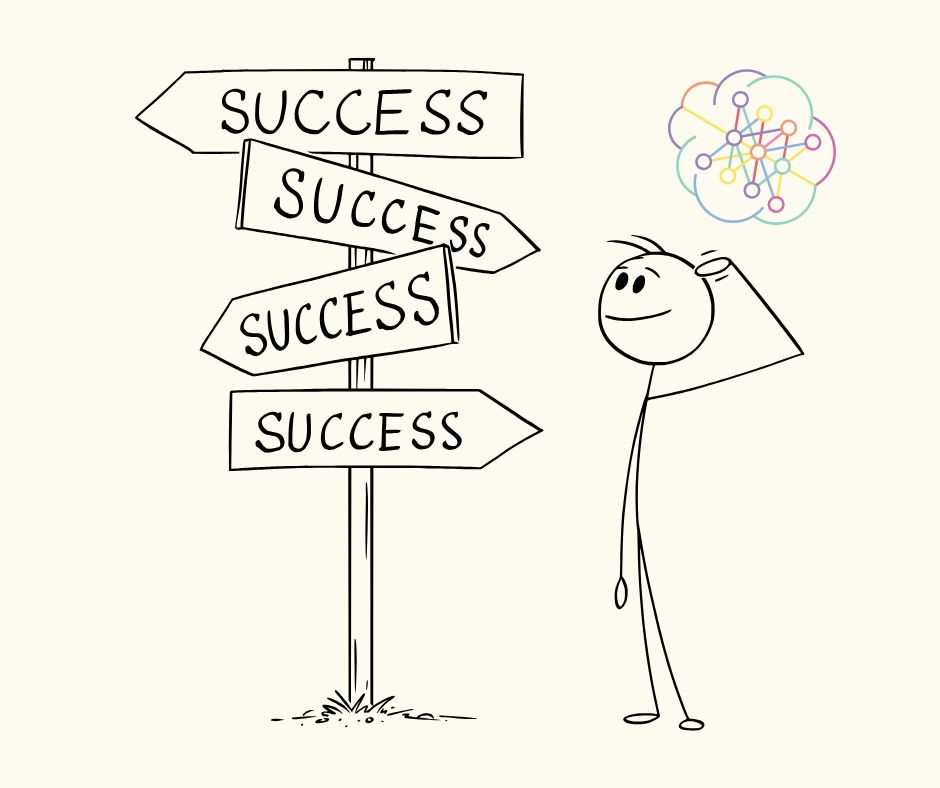Let’s be real. The self-help world loves to throw around phrases like “acceptance is the key” like they’re Oprah handing out free cars. And sure, it sounds wise. But when anxiety is clutching your chest and your inner critic is running a full-blown TED Talk on how you’re failing at life, the concept of “acceptance” can feel about as useful as a screen door on a submarine.
I’ve been there. I spent years trying to outsmart my anxiety. Meditation apps, affirmations, self-help books—you name it. I treated my anxious thoughts like a never-ending game of whack-a-mole. But the more I tried to push them away, the harder they came back. (Did you know that the harder you try not to think about something, the more it tends to occupy your mind? This phenomenon, known as the ironic process theory, suggests that when you consciously attempt to suppress a thought, a part of your brain continues monitoring for that very thought, making it even more persistent.) It wasn’t until I stopped fighting that things really started to shift.
The Myth of Fighting Anxiety
For a long time, I saw anxiety as the enemy. I was convinced that if I just found the right coping mechanism, I could quiet that relentless voice once and for all. But no matter how hard I tried, anxiety always found a way to creep back in — louder and more persistent than before.
Then I came across an idea that completely shifted my perspective: Fighting anxiety is like trying to wrestle with a shadow. The more you resist it, the darker and more overwhelming it becomes. What if, instead of battling against it, I chose to listen? What if anxiety wasn’t something to defeat, but something trying to tell me something important?
That simple shift — from resistance to curiosity — opened the door to understanding. And from that understanding came healing.
Acceptance: The Brave Choice
Acceptance isn’t passive. It’s one of the bravest choices you can make. It’s deciding to stand in the storm rather than constantly running for cover. I used to think accepting my anxiety meant giving up. But really, it meant giving myself permission to feel without judgment.
Imagine sitting in a crowded theater. Anxiety is like that one person loudly narrating the movie. Annoying? Absolutely. But you’re still in control. You can shift your focus back to the main event: your life.
But What About Those Awful Bodily Symptoms? How Do We Accept Those?
Accepting the physical symptoms of anxiety — the racing heart, the tight chest, the shaky hands — can feel nearly impossible when they hit. It’s natural to want to fight them, to wish them away. But resisting these sensations often intensifies them. The more we fear and reject what’s happening in our bodies, the more anxious we become.
So, how do we accept these uncomfortable symptoms?
1. Recognize Them as a Natural Response
First, remind yourself that these physical sensations are part of your body’s natural stress response. Anxiety triggers the fight-or-flight system, releasing adrenaline and preparing you to face a perceived threat. While uncomfortable, these symptoms are not harmful — they’re simply your body trying to protect you. Recognizing this can take some of the fear out of the experience.
2. Shift from Fear to Curiosity
Instead of thinking, “Why is this happening? I need it to stop,” try asking, “What is my body trying to tell me?” Maybe it’s signaling that you’re overwhelmed, exhausted, or avoiding something emotionally difficult. Curiosity replaces fear and opens the door to understanding.
Article Continued Below



3. Practice Grounding Techniques
Acceptance doesn’t mean passively enduring discomfort. It means acknowledging what’s happening without judgment while offering yourself support. Grounding exercises can help regulate your nervous system:
- 5-4-3-2-1 Technique: Name five things you can see, four you can touch, three you can hear, two you can smell, and one you can taste.
- Box Breathing: Inhale for four counts, hold for four, exhale for four, and hold again for four. Repeat until you feel more centered.
- Progressive Muscle Relaxation: Tense and then release each muscle group, starting from your toes and moving upward.
4. Let the Sensations Be
One of the most powerful practices is allowing the symptoms to exist without resistance. Instead of tensing up and trying to push them away, experiment with welcoming them. You might say to yourself, “I notice my heart is racing. That’s okay. My body thinks I’m in danger, but I’m safe right now.” When you stop fighting the sensations, they often lose their intensity.
5. Reframe Your Perspective
What if you viewed these symptoms as a sign of resilience? Your body is doing exactly what it was designed to do when it perceives a threat. And each time you experience anxiety and practice acceptance, you’re rewiring your brain to respond differently. Over time, this strengthens your ability to manage anxiety without fear.
Acceptance doesn’t mean enjoying the discomfort — it simply means making peace with it. By shifting your relationship with those physical symptoms, you can move through them with greater ease and confidence. And with each moment of acceptance, anxiety loses a little more of its power.
The Transformation Begins
Once I stopped resisting, something shifted. Acceptance cleared the fog, and I began to see what was underneath the anxiety. For me, it was fear—fear of failing, fear of being judged, fear of not being enough. But the moment I stopped running from those feelings, they lost some of their power.
Acceptance also made space for curiosity. Instead of asking, “Why am I like this?” I started asking, “What is this trying to teach me?” And let me tell you, anxiety is a surprisingly wise (if slightly annoying) teacher.
Tools That Helped Me Accept and Transform
- Name It to Tame It
When anxiety flared, I learned to name it without judgment. Instead of “I’m falling apart,” I tried, “Anxiety is here, and I’m noticing it.” This simple shift separated me from the emotion, giving me space to respond instead of react. - Get Curious
Anxiety often masks something deeper. I started asking myself, “What am I afraid of right now?” or “What is this anxiety protecting me from?” The answers weren’t always easy, but they were always revealing. - Practice Radical Self-Compassion
I had to learn how to talk to myself like I would a friend. No more calling myself weak or broken. Instead, I practiced phrases like, “I’m doing the best I can,” and “It’s okay to feel this way.” - Move My Body
Anxiety lives in the body, so I found movement to be a game changer. Sometimes it was a walk around the block, other times it was dancing in my kitchen like no one was watching. (Pro tip: No one ever is.) - Breathe, But Make It Intentional
Breathwork became my anchor. Box breathing (inhale for 4, hold for 4, exhale for 4, hold for 4) grounded me in moments when anxiety felt unbearable.
Finding Strength in Community
One of the biggest lessons I learned? Transformation doesn’t have to be a solo mission. I can’t tell you how healing it was to hear someone say, “I get it.” Or “I’ve been there.” Finding a supportive community reminded me that I wasn’t broken—I was human.
That’s why we’re all about building a Brash community where you can be your gloriously imperfect self. Whether it’s sharing your story, reading someone else’s, or simply soaking up encouragement, you’re not in this alone.
Acceptance isn’t a one-and-done deal. It’s a daily practice—sometimes hourly. But every time I choose to meet my anxiety with compassion instead of resistance, I build resilience. I rewrite the story.
So, the next time anxiety shows up uninvited, give it a nod. Let it know you see it, but you’ve got a life to live. And that life? It’s about to get a whole lot braver.
Until next time, keep it brash, keep it true to you, and remember—you’re stronger than you think. You got this!




